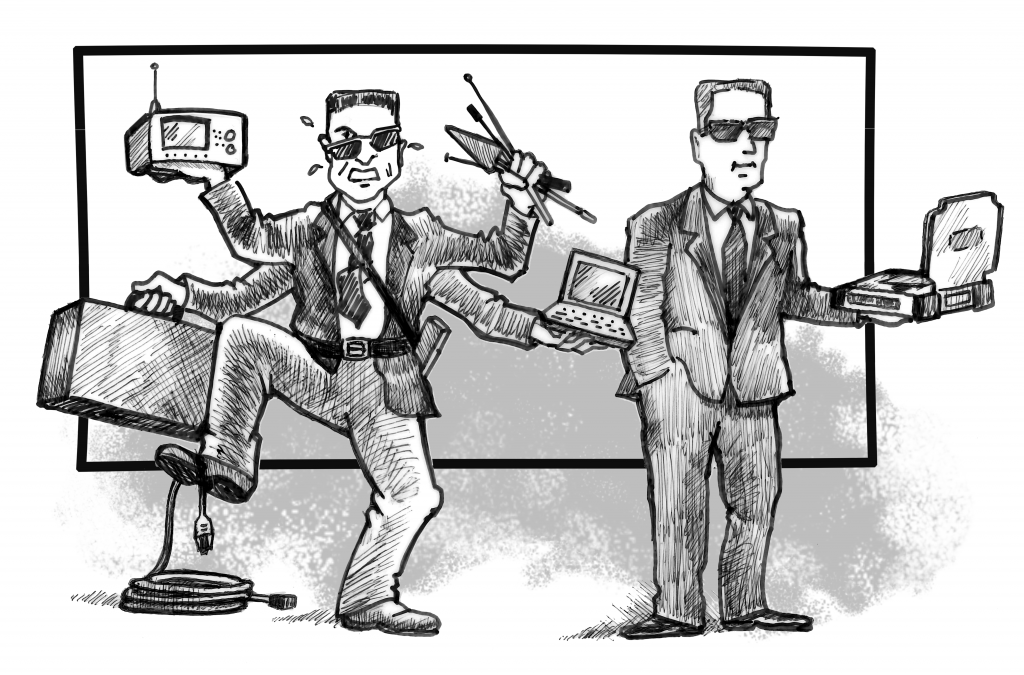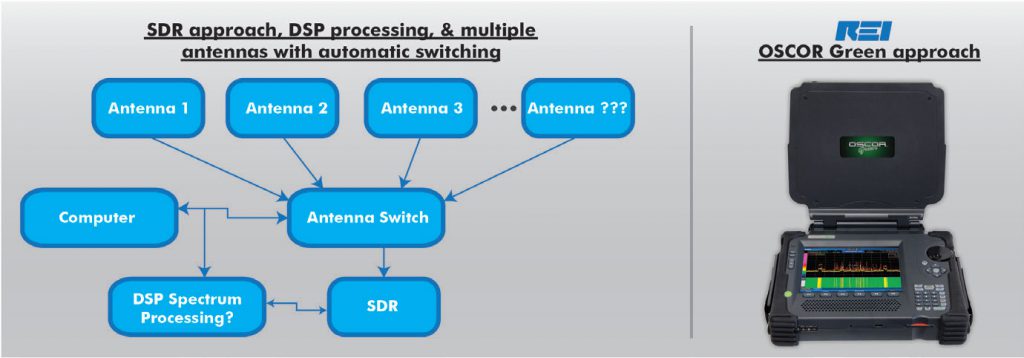Software Defined Radios (SDR) are becoming more common to use when looking for rogue RF transmissions in certain environments. They may appear to be less expensive simply because there are many tuner modules on the market that provide Spectrum Analyzer capability for very low cost, and there are various suppliers of software and hardware to mix and match all sorts of system combinations. However, total cost of software, antennas probes, cables, software defined receivers, a laptop, etc., can get expensive.
These types of SDR systems may be a cheap and effective method for setting on a table and simply scanning the RF spectrum in defined bands. What happens when the physical transmission source must be located? The most reliable method is to walk around with the receiver and search for the energy. As such, there are several important ergonomic and performance factors to consider with an SDR based system.
The main consideration in an SDR based system is, of course, the configuration. At a minimum a computer, receiver, and an antenna are required. However, since a single antenna will not cover a broad frequency range, multiple antennae will be required, and the decision must be made to either use a single antenna, manually switch antennae, or purchase a separate antenna switching system. A single broad-band antenna will not effectively cover a broad frequency range without losing significant sensitivity over broad ranges of the spectrum. Owning multiple antennae may be useful, but it doesn’t cover the spectrum quickly unless there is a computer controlled system that provides automatic switching as the system sweeps the spectrum. Furthermore, most SDR systems rely on the computing power of the external computer to process the spectrum data, while a few more sophisticated SDR systems have external high speed DSP systems that provide extremely fast spectrum processing functionality.
SDR based systems originated from the General Test equipment industry as a low cost alternative to bench top spectrum analyzer systems, and SDR systems certainly have their place in the market for known signals or bands. They are very useful for educational institutions, hobbyists, certain types of RF testing, and for some security applications such as permanent in-place monitoring. Some advanced systems also provide additional characterizing functions for sophisticated modulation schemes. However, when it is critical to quickly locate the source of potentially threatening RF transmissions in an unknown frequency band, an integrated system is much more reliable and ergonomic.
REI has designed the OSCOR™ Green with the full intent of providing the best operational performance by addressing sweep speed, sensitivity, and functionality in an integrated ergonomic package.


